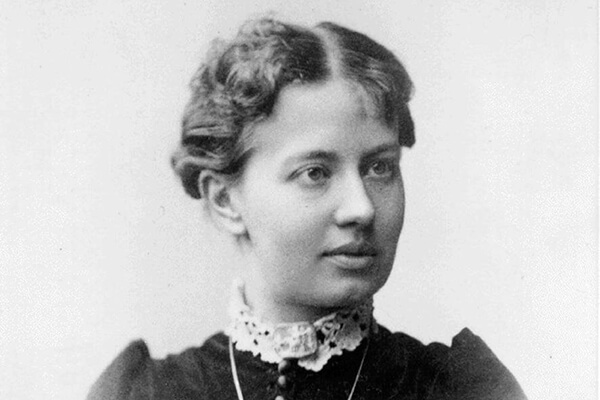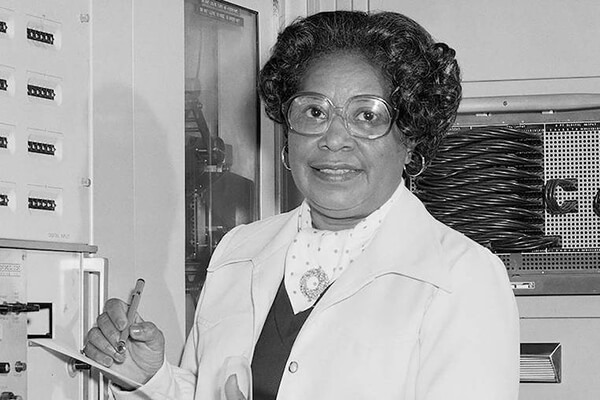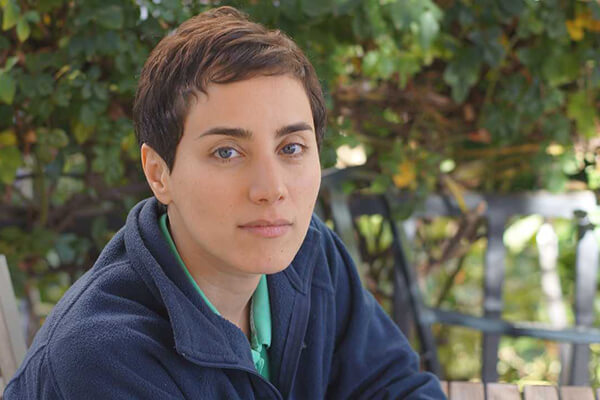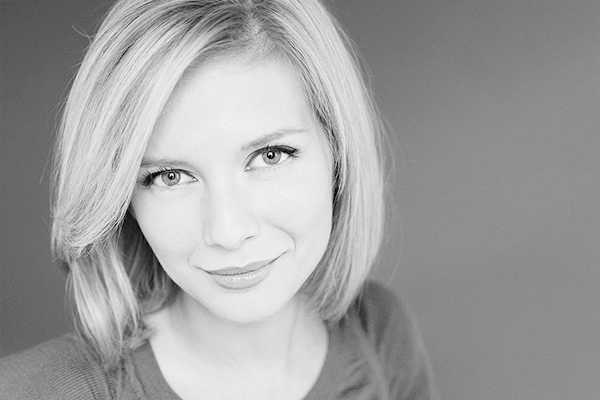8 iconic female Mathemagicians
If we asked you to mention a great mathematician who has impacted the world, the chances are high that you would mention Einstein, Isaac Newton or Archimedes. These men were great mathematicians indeed, and their work has contributed to both society and the field of mathematics. However, there are also a lot of female mathematicians whose work have made a significant impact in both societies and the field of mathematics.
The contributions by women in mathematics range from discovering fundamental theorems to important work on rocket science. Unfortunately, their work is less known than the work of their male peers. The stereotype that maths is a male subject prevails today, and the contributions of women and minorities are often ignored and seen as lucky coincidences rather than knowledge and skills.
One of the many important aspects of highlighting women in mathematics is to make sure that we are telling the whole story. By not paying attention to maths contributions by women, we are missing essential bits of our history. Sharing the contributions of female mathematicians is a great way to teach children the history of maths and remind them that maths is accessible to everyone and that everyone is a maths person. We just need equal opportunities to practice it – and relatable and inspiring icons to look up to.
Knowing that maths anxiety is more common for girls than for boys, let international women day be an opportunity for you to provide your child with a deeper understanding of some of the women in mathematics. Here are eight of these inspirational women and their contributions to both the field of mathematics and the fight for equality in the context of history. You can use this list to show children that succeeding in maths is about staying curious and searching for answers – not about gender:
Hypatia (370-415 AD)

Hypatia was born into an upper-class family as the daughter of the prominent Egyptian Mathematician Theon. Since her father was a well-known and well-educated member of society, she received the same education as her male peers, which wasn’t a matter of course. Nevertheless, she quickly proved that she was a great mathematician and collaborated with her father on commentaries of famous mathematical works.
In addition to this, she became a mathematics teacher, which was unheard of in Egypt. She is believed to be the first woman known ever to have taught mathematics! As a teacher, she wrote several works to help her students grasp mathematical concepts, laying the groundwork for many future mathematicians.
Hypatia is also known for her advancements in mathematics for her work on conic sections. For example, she developed the concepts of ellipses by dividing cones into planes.
Sophie Germain (1776-1831)

Born in Paris, France, the teenager Sophie Germain spent her time reading every mathematics book she could get her hands on, which taught herself advanced mathematics, Latin, and Greek.
At 18, she started studying at the famous maths academy École Polytechnique. This wasn’t easy for a woman at that time, and to get her professor’s attention, she used the name of a former male student. However, after discovering that Sophie did the work, her professor was very impressed and became her mentor. This helped Sophie establish herself as a respected mathematician in the male-dominated field of mathematics.
Sophie Germain contributed to Fermat’s Last Theorem, which helped solve the problem centuries later. She was also a pioneer in elastic theory, which led to her becoming the first woman to be honoured by the Paris Academy of sciences.
Ada Lovelace (1815-1852)

Born in London, Ada showed an early interest in both mathematics and technology, but at this time, women were not allowed to study at the universities. However, Ada’s mother (a mathematician herself!) arranged for Ada to be privately tutored at home by great mathematicians. As a teenager, Ada got presented to Charles Babbage. He had invented a mechanical calculator but wanted the machine to do different tasks depending on the calculations. Together they discussed how this could work. Ada’s work is based on her translation of Babbage’s theories from French to English.
Not only did she translate the theories, but she also added her thoughts and notes, making the text three times longer. She described how the machine could perform and repeat a series of instructions – a program. This makes her text the first description ever of computer programming! Ada Lovelace is regarded as the first person to recognize the potential of computing machines and has the title of the first computer programmer. She also has a computer language named after her, Ada.
When Ada imagined what this “analytical machine” could be used for in the future, she talked about how it could compose complicated music and create graphics, text, images, and sounds. Looking at our computers today, she predicted the future!
Sofia Kovalevskaya (1850-1891)

Sofia was born in Moscow, Russia. She had an early interest in mathematics and taught herself many advanced maths concepts, both independently and in school. Determined to continue her studies at the university, she entered a fake marriage to leave Russia and attend a university in Germany. At first, and due to her gender, the professors didn’t take her seriously. But they soon realized the genius they now had on their hands. After finishing her studies at the university, Sofia became the first woman to receive a doctorate in mathematics.
However, even with her prestigious PhD from the university, Sofia had a hard time finding employment within mathematics. It wasn’t until many long years later that she got the opportunity to lecture at the University of Stockholm in Sweden. She became the first woman in Europe to hold a full professorship in mathematics.
Sofia Kovalevskaya also contributed to the field of maths with her work on partial differential equations, the dynamics of Saturn’s rings, and elliptic integrals. But she was also a writer and advocate for women’s rights in the 19th century. Her determination and struggle to get a good education led to universities opening their doors to women.
Dorothy Vaughan (1910-2008)

“I changed what I could, and what I couldn’t, I endured.”
Dorothy was born in Kansas City, Missouri and graduated high school with a full-tuition scholarship. At 19, she graduated university with a B.A. in mathematics. Her professors encouraged her to continue her studies, but Dorothy had other plans – she started to work as a teacher to support her family during the Great Depression. The times were tough, with the school still being racially segregated by Jim Crow laws.
However, in 1943 she started working for NACA’s (former NASA) West Area Computing unit, a group of African American female mathematicians considered “human computers”. The team was responsible for the computations needed for aeronautical experiments. NACA was segregated, and black employees were forced to use separate bathrooms and dining facilities. Despite these conditions, Dorothy Vaughan was promoted to lead the West Computers. This made her the first black female supervisor at NASA and one of its few female supervisors – enabling her to advocate for women.
When NACA became NASA, the segregated facilities were closed, and Dorothy and many other West Computers joined NASA in a new team – made up of men and women of all races. NASA started using electronic computers, and instead of retiring from her role as a human supercomputer, Dorothy became an expert at the computer programming language FORTRAN.
Dorothy is also the main character in the hit movie “Hidden Figures” together with her other West Computers, Katherin Johnson and Mary Jackson.
Katherine Johnson (1918- )

“Girls are capable of doing everything men are capable of doing. Sometimes they have more imagination than men”.
Katherine Johnson grew up in a small town in West Virginia that didn’t offer schooling for black students after eighth grade. Determined to give Katherine a good education, her father drove her more than 100 miles to continue in another school. Katherine’s results in school impressed her college professor W.W. Schieffelin Claytor (One of the first black persons to earn a PhD in mathematics) so much that he took it upon himself to help her become a research mathematician.
After college, she worked as a teacher before continuing her studies when she became one out of only three (and the only female) Afro-American students at West Virginity University.
Later, Katherine joined the NACA (later NASA), assigned to an all-male flight research team. She performed trajectory analysis at NASA for Alan Shephard, the first American to enter space. But what she might be most known for is her later work at NASA, where she was checking computers’ orbital equations for John Glenn’s mission. It is said that Glenn personally asked for Katherine Johnson for this assignment, saying that “If she says they’re good, then I’m ready to go”.
Katherine spent over 35 years of her career at NASA, working with everything from the moon landing to the plans on a mission to Mars. In 2015, Katherine received the Presidential Medal of Freedom by Barack Obama for her pioneering example of African-American women in STEM. She has also been an influential voice encouraging students to enter STEM fields.
Mary W. Jackson (1921-2005)

“Sometimes the students are not aware of the number of black scientists and don’t even know of the career opportunities until it is too late”.
Mary W. Jackson grew up in Hampton, Virginia. She graduated high school with the highest honours and later earned a dual bachelor’s degree in mathematics and physical sciences. She became a teacher before joining NACA (later NASA). She started her career as a computer at the segregated West Area Computing division but later worked on the Supersonic Pressure Tunnel projects at NASA’s predecessor.
She got encouraged to undergo training to become an engineer but needed to take graduate-level courses in mathematics and physics to qualify for the job. The classes were offered in a night program at an all-white school, and Mary petitioned the City of Hampton to allow her to attend them. Mary got enrolled in the program, and after finishing it, she became NASA’s first black female engineer and co-authored 12 technical papers at the agency.
After achieving the most senior title within the engineering department, Mary W. Jackson accepted a demotion to become a manager, allowing her to help women and other minorities in their science, engineering, and mathematics careers at NASA.
Maryam Mirzakhani (1977-2017)

Maryam was born in Iran and wanted to be a writer before she fell in love with maths in high school. In high school, she, along with her best friend, became the only Iranian women to qualify for the International Mathematical Olympiad. The following year, Maryam earned a gold medal in the Olympiad – with a perfect score!
In 1999, she moved to the United States for graduate school at Harvard University, where she got her PhD and later became a professor at Stanford University. Maryam Mirzakhani made significant contributions to researching maths topics, including theoretical mathematics, hyperbolic geometry, and ergodic theory.
In 2014, she was the first woman and first Iranian to be awarded a Fields Medal for “her outstanding contributions to the dynamics and geometry of Riemann surfaces and their moduli spaces”. The Field Medal is also known as the International Medal for Outstanding Discoveries in mathematics. The Field Medal is the most prestigious mathematics award one can receive and is often regarded as the Nobel Prize in Maths.
Rachel Riley (1986- )

“There’s no reason for men to be better at maths than women – it’s just about our perception”.
Rachel was born in Rochford, Essex, and gained 4 A grades at A level before attending Oriel College in Oxford. In Oxford, she earned a second-class honours degree in Mathematics, covering Quantum Theory, Fluid Mechanics and Applied Maths.
Nowadays, Rachel Riley is most known as the numbers expert on Challe 4’s long-running quiz show Countdown that she joined at the age of 22. In Countdown, she applies her maths skills by handling the letters and numbers rounds to solve complicated problems. Outside of Countdown, she has also presented other shows such as 8 Out of 10 Cats Does Countdown and starred as a contestant on Strictly Gone Dancing – Makin Riley a well-known face for women in Mathematics in the U.K.
Rachel is also known for her interest in promoting science and mathematics to young people, making children experience the “joys of applied maths, quantum mechanics and time travel”. Not to forget her passionate work to get more girls involved- and interested in STEM subjects.
Count on me! can help children overcome maths anxiety
Research has shown that children who practice maths by playing a game-embedded app such as Count on Me! improve their skills by 60 percent. Count on Me! is for children aged 6-9 years to play on iPads based on a unique concept of Game-Embedded Teaching (GET) which is proven to accelerate learning and support maths home learning.
Developed using cognitive behavioural therapy (CBT) combined with advanced gaming technology, the game helps children learn and master early maths concepts such as pattern recognition, addition, subtraction, multiplication, division and equalities.


